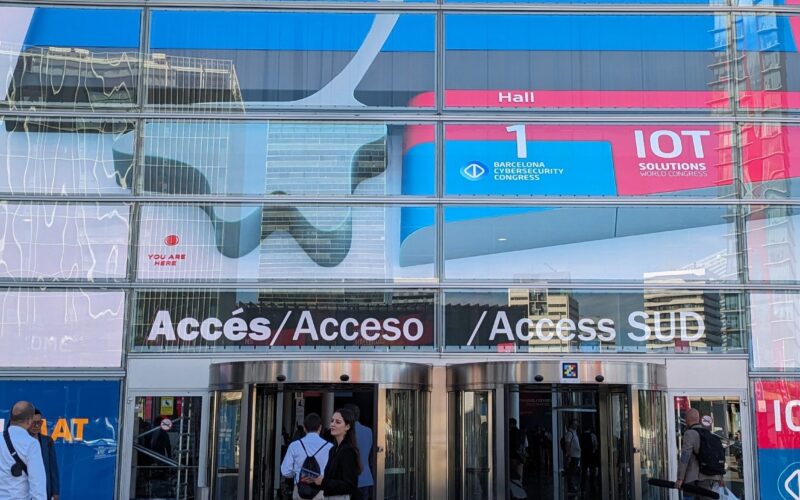//php echo do_shortcode(‘[responsivevoice_button voice=”US English Male” buttontext=”Listen to Post”]’) ?>
— Barcelona. During the recent IoT Solutions World Congress (IOTSWC), Wienke Giezeman, CEO and co-founder of The Things Industries, a leading figure in the low-power wide-area network (LPWAN) space, offered a refreshing perspective on the current state of the market.
The Things Industries, with over 1,000 client companies globally, has seen a 100% year-on-year growth in deployments and a 60% year-on-year growth in revenue. This success hinges on the company’s customers’ profitability.
During the conference, EE Times had the opportunity to talk to Giezeman. He acknowledged how the initial hype surrounding IoT led to inflated expectations. He pointed to several companies scaling back or exiting the market entirely. However, he emphasized a positive underlying trend: steady growth in practical applications. This growth is driven by solutions that solve real problems and reduce operational costs.
The power of LoRaWAN
Giezeman opened the interview highlighting LoRaWAN’s key features: long-range communication and extended battery life. This combination makes it ideal for connecting devices in remote locations. LoRaWAN operates on unlicensed frequencies, further reducing deployment and maintenance costs.
“Look, the key thing about LoRaWAN is it offers long-range communication and extended battery life. This makes it perfect for applications where traditional networks like Wi-Fi or cellular aren’t a good fit, especially for remote locations,” Giezeman argued.
A spectrum of applications for sustainability
Giezeman showcased a diverse range of applications where LoRaWAN is driving sustainability efforts.
The potential of LoRaWAN for sustainability is a recurring theme. From optimizing resource usage in agriculture and manufacturing to facilitating waste reduction and environmental monitoring, LoRaWAN empowers businesses to operate more sustainably. This focus on environmental responsibility aligns perfectly with growing global concerns and consumer demands.
“LoRaWAN is used in many applications that directly address sustainability challenges. It’s a game-changer,” he said.
During the interview, Giezeman mentioned several cases, including:
- Environmental monitoring: Sensors deployed across cities and even indoors (such as schools) can track CO2 levels, helping us understand and improve air quality.
- Forest fire detection: Early detection of wildfires through LoRaWAN sensors translates to faster response times, minimizing environmental damage.
- Smart water meters: LoRaWAN networks enable efficient water usage by remotely monitoring consumption and detecting leaks.
The business case for LPWANs
The conversation delved deeper into the economic viability of LPWAN solutions. Giezeman acknowledged the initial investment required for device installation and network setup. However, he emphasized the significant return on investment (ROI) achievable through operational cost reduction, improved efficiency and data-driven decision making.
The economic filtering inherent to LoRaWAN, where every message sent is carefully considered due to battery limitations, ensures the data is valuable and relevant. This structured, high-quality data is essential for training effective AI models.
“LoRaWAN goes beyond just immediate efficiency gains. The data collected by these sensors becomes incredibly valuable,” Giezeman said. “Imagine a smart building where occupancy sensors can optimize meeting room usage and air quality monitors to ensure a healthy environment for everyone. All this data can be integrated with existing systems to create even more efficiencies and inform better decision-making.”
Beyond LPWAN, LPLAN and no-power IoT
While LPWANs solve the problem of low-power connectivity across large areas, a new low-power local area network (LPLAN) concept is starting to appeal to integrators.
This technology is suited for applications where network range is not a primary concern and low power consumption is crucial. Giezeman envisions a future where advancements in energy harvesting, especially in ambient sensors, eliminate the need for batteries altogether, creating a truly “no-power” IoT (NP-IoT) landscape.
Non-terrestrial networks offer promising potential
Exploring the possibilities of non-terrestrial networks (NTNs), particularly those utilizing satellite constellations like Elon Musk’s Starlink, Giezeman acknowledged the excitement surrounding the technology but expressed caution. He has not witnessed a clear product-market fit for cellular or satellite-based IoT solutions yet.
While The Things Industries is interested in the potential of NTNs, the company awaits proven business opportunities before fully embracing them. Giezeman sees potential global logistics and asset tracking applications, but industry adoption remains elusive.
“We are very excited about it. I am very, very excited about the promise. I am waiting for the delivery. I haven’t seen a product-market fit for satellite IoT,” he said. “Many companies are trying to seek product market fit for it opportunistically. I’m excited because I’m a techno opportunist, okay? But I still have to be convinced by the business opportunities.”
Challenges and the road ahead
One concern raised during the interview is investor skepticism. While the technology’s benefits are undeniable, some investors seek clearer pathways for capturing the value generated by LoRaWAN solutions and IoT in general. Giezeman suggests that an increased focus on replicable, scalable business models demonstrating a clear ROI within a short timeframe will address this concern.
“There are definitely challenges to wider LoRaWAN adoption, but the focus on real bottom-line benefits is becoming increasingly important, especially in this economic climate. Investors are looking for solutions that make sense financially, and LoRaWAN delivers,” he argued.
Another challenge is the fragmented nature of the IoT market. LoRaWAN offers a unifying force, but integration with other technologies and infrastructure remains crucial. Additionally, clear success stories and case studies within specific industries are paramount to encourage wider adoption.
LoRaWAN is poised to play a pivotal role in shaping the future of IoT. Its ability to connect devices in remote locations, low power consumption, and growing ecosystem of devices and applications make it a compelling choice for various industries. As the focus on sustainability intensifies, LoRaWAN’s ability to optimize resource usage and environmental monitoring positions it as a critical technology for building a more sustainable future.
“LoRaWAN is more than just a technology; it’s a driving force for positive change. LoRaWAN paves the way for a greener future by enabling sustainable practices and efficient data collection,” Giezeman said. “As we move forward, I am confident that LoRaWAN will continue to revolutionize how we connect our world and build a more sustainable tomorrow.”
Source link
lol




